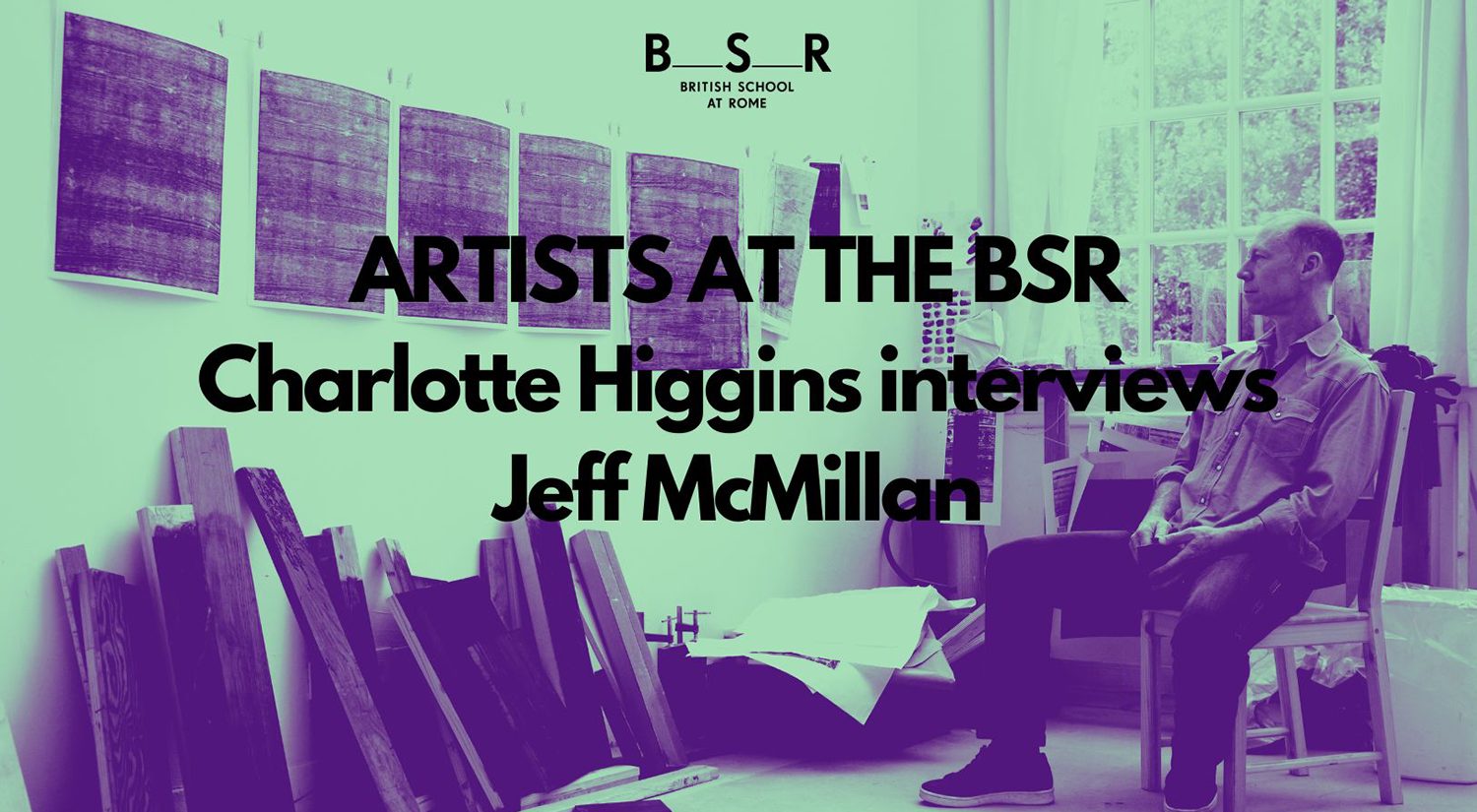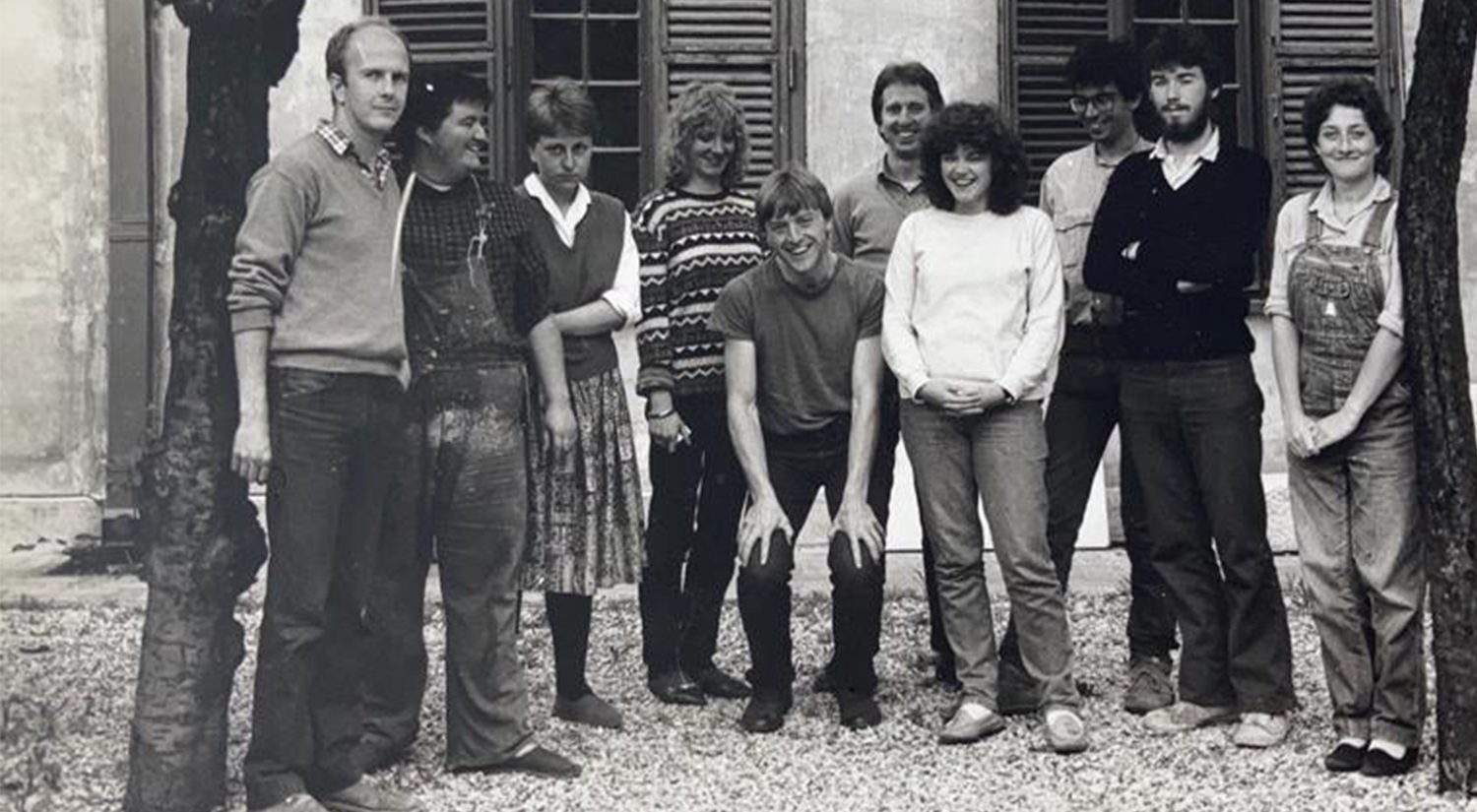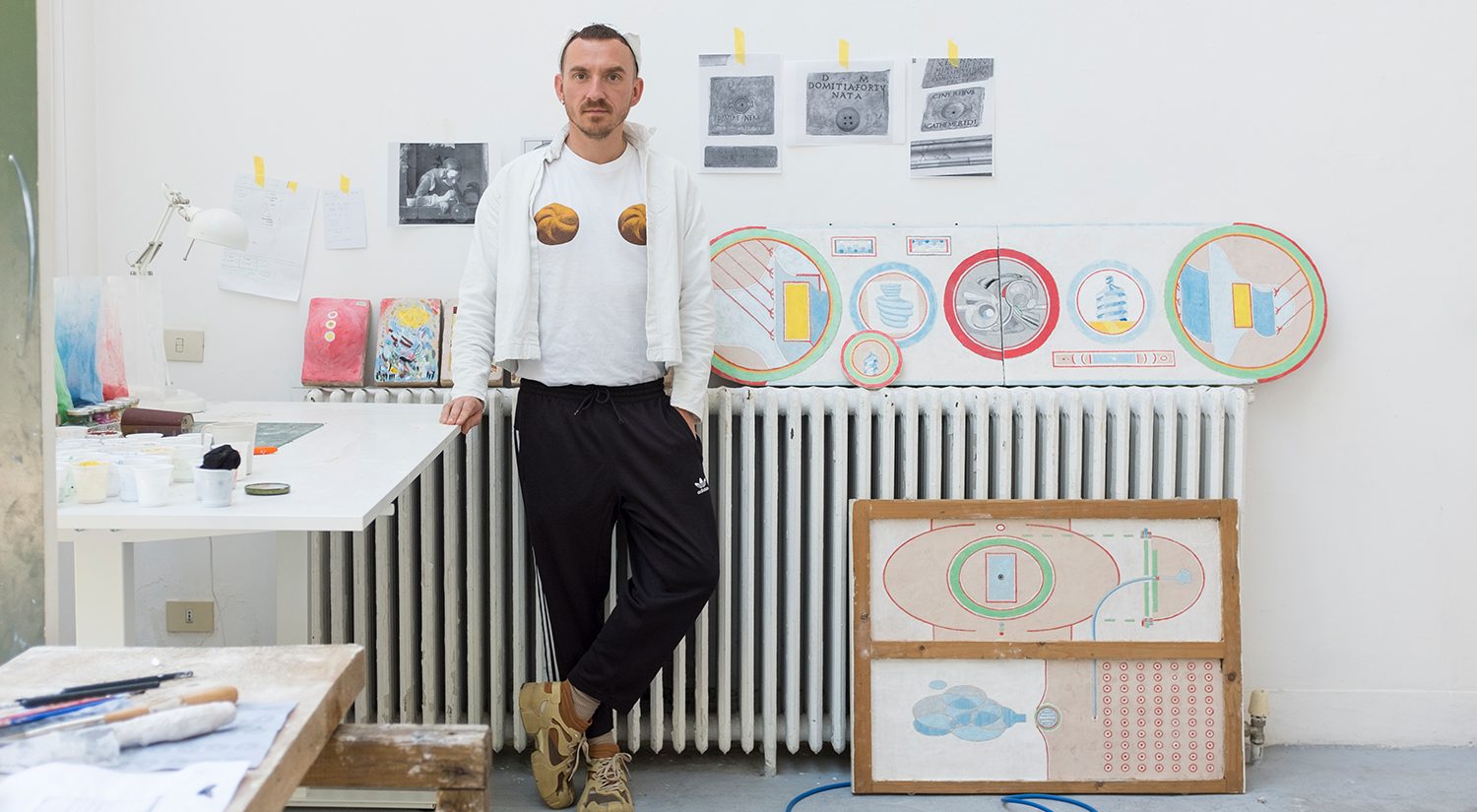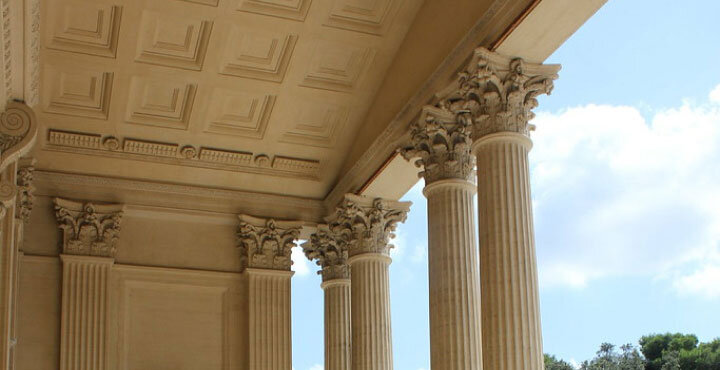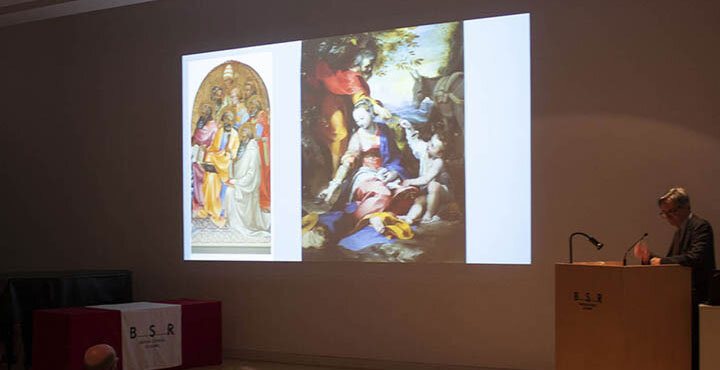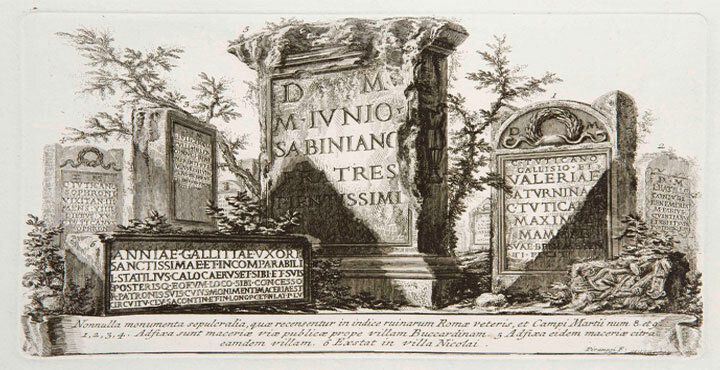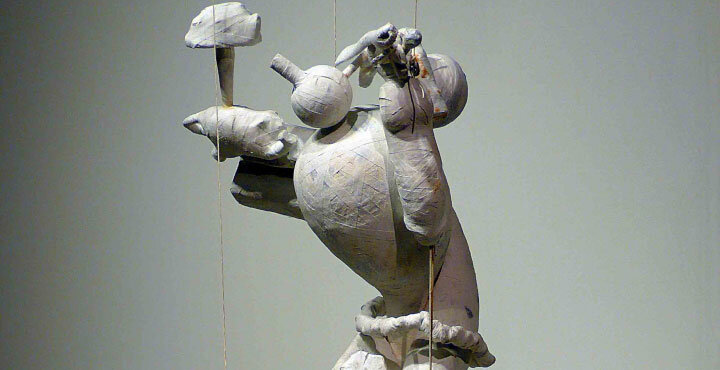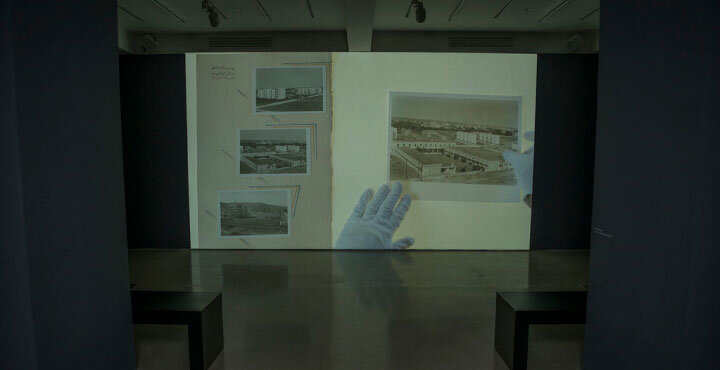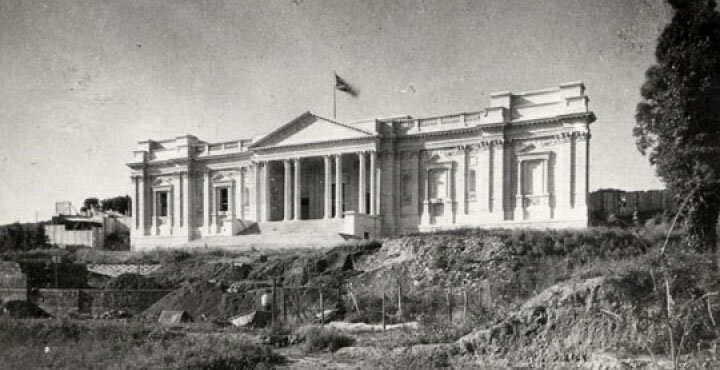Our third interview features artist Jeff McMillan, Abbey Fellow in Painting at the BSR in 2020. His work is held in public and private collections including Tate, London; the Whitworth Art Gallery, Manchester; Museum Voorlinden, Netherlands and San Antonio Museum of Art, Texas. As a curator McMillan created and ran the project space PEARL from 2001-2004 and he was co-curator of British Folk Art at Tate Britain in 2014.

The autumn of 2020 was a curious time to be undertaking the Abbey painting fellowship, right in the middle of the Covid-19 pandemic. But it’s something that Jeff McMillan had long aspired to do – even before he’d moved to London from his native US in the 1990s. “I never thought I’d get it. It seemed so prestigious,” he says. “In fact I applied a couple of times and was rejected – and then on my third go, I finally got it.”
It was a moment in his life when he was ready to reinvigorate his career. He had an idea to explore printmaking. When he arrived, he recalls, “I went to the two art-supply shops that were open at the time and bought some rollers, some ink and some Japanese papers. There was only a limited supply of papers and I had to use what was there – but sometimes having very little choice simplifies things for an artist.” He bought a bicycle from the Porta Portese flea market (a pleasing resonance, for him, is that Vittorio de Sica’s classic movie The Bicycle Thieves is partly set there). He also equipped himself with a small Japanese saw that fitted into his backpack – as well as a letter explaining in Italian the presence of said saw – “which got me out of a jam a couple of times”.
He quickly established a routine. He’d set off, usually with some destination in mind – the church of San Paolo Fuori le Mura, for example. The city at the time was quiet, and absolutely empty of tourists – he remembers having the Sistine chapel almost to himself. There so little traffic that cycling was a breeze, and he covered a good amount of ground that way, while still at a pace at which he could absorb the sights. Along the way, “I collected pieces of wood off the street – from pieces of furniture, to timber from building sites and pallets behind supermarkets.” Once back at the studio he planed down the planks, glued different pieces together to form rectangular blocks, and then used them to make prints of the contrasting grains, choosing a palette to echo the dense, heavy shades of Rome’s ancient stone buildings.

In the meantime, social life at the BSR adapted itself to pandemic conditions. At mealtimes, fellows had to spread themselves out – not a system conducive to conversation. But they found ways to come together despite the restrictions. “We entertained ourselves. We christened the snack bar the ‘snack bar internazionale’ and held improvised exhibition openings there every Friday night – and involved the scholars. We’d put some music on and dance after we’d had a few martinis.” They held an open-air exhibition, too – which is how McMillan ended up tacking his prints to the wooden gates of the Porta Portese flea market.
“I had so much freedom,” he says of his months at the BSR, “and it was really valuable”. It was the first time he’d worked with printing since he was an undergraduate. It has opened up a whole new way of working, and a body of work whose possibilities he continues to explore.

